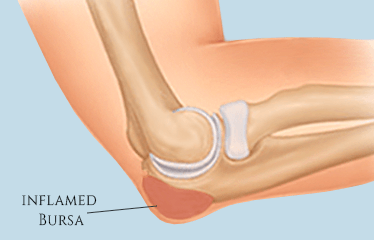Elbow grease……
As with every area of the body there are lots of different types of injuries that can occur within the elbow joint. It can sometimes be difficult to determine exactly what the injury is without seeking professional help first. In this month’s newsletter we’ll look at a few of the main elbow injuries we see here in clinic and include some key signs and symptoms of what to look out for. If you are suffering with any of these symptoms get booked in for an assessment here in the clinic where we can provide injury specific treatment and exercises.
Lateral Epicondylitis (Tennis Elbow)
Lateral Epicondylitis also known as tennis elbow involves inflammation or damage to the tendons on the outer side of the elbow. You do not need to be a tennis player to suffer from tennis elbow. Tennis elbow can in fact affect anyone involved in repetitive gripping, twisting or lifting motions of the arm and wrist or poor technique when playing sport. Some people affected by this involve tennis players, painters and desk workers, as well as many other activities.
Causes
- Overuse of arm and wrist
- Repetitive gripping, twisting and lifting
- Poor technique when playing sports
- Impact/ trauma to outside of elbow
Symptoms
- Tenderness or discomfort on outside of the elbow
- Loss of grip strength/ weakness in the wrist
- Difficulty gripping objects
- Pain that increases with activities involving the wrist

Medial Epicondylitis (Golfers Elbow)
Medial Epicondylitis also known as golfers elbow involves inflammation or damage to the tendons on the inner side of the elbow. Similar to tennis elbow, it is not just golfers who suffer from golfers elbow. Golfers elbow can occur in anyone participating in activities which involve gripping, flexing or bending of the wrist, hand and fingers.
Causes
- Repetitive stress – activities like golfing, weightlifting, racket sports, throwing or other things involving wrist flexion.
- Direct trauma to the inside of the elbow
Symptoms
- Tenderness or pain on inside of elbow
- Weakness in hand or wrist
- Difficulty gripping things/ weak grip strength
- Pain increased with activities involving wrist flexion or gripping

Olecranon Bursitis
Olecranon bursitis is inflammation or irritation of the olecranon bursa which is a fluid filled sac at the back of the elbow. The bursa is located between the skin and the olecranon process of the ulna (the pointy bump on the back of the elbow). The bursas job is to reduce friction between the skin and the bone and helps with smooth movement of the elbow joint. When this bursa becomes irritated or inflamed it can lead to olecranon bursitis.
Causes
- Repetitive pressure – repeated pressure on the tip of the elbow
- Direct trauma to the tip of the elbow
- Infection – rare but bursitis can be caused by bacterial infection of the bursa. Usually through something like a cut
- Underlying medical conditions – such as rheumatoid arthritis and gout may predispose individuals to bursitis due to inflammation and immune system dysfunction
Symptoms
- Pain or tenderness (especially with movement or pressure)
- Swelling at tip of elbow
- Warmth or redness over area
- Limited range of movement
- Fluid filled sac around the elbow

Cubital Tunnel Syndrome
Cubital tunnel syndrome involves the compression or irritation of the ulnar nerve as it passes through the cubital tunnel. The cubital tunnel is a narrow pathway on the inside of the elbow. Cubital tunnel syndrome is also known as ulnar nerve entrapment or ulnar neuropathy. The ulnar nerve provides sensation and muscle control to the forearm and hand (mainly little finger and half the ring finger).
Causes
- Compression of the ulnar nerve – can be caused by repetitive or prolonged bending of the elbow through things like typing or leaning on a hard surface, direct trauma to elbow, bone spurs, cysts or abnormal muscle structures around the cubital tunnel.
- Other factors – repetitive use of the elbow and forearm muscles, previous elbow injuries or surgeries that may have altered the structure or mechanics of the elbow joint.
Symptoms
- Numbness and tingling – in the ring finger and little finger particularly when the elbow is bent or pressure is applied to the inner side of the elbow
- Pain or discomfort along the inner side of the elbow which may radiate down the forearm or into the hand
- Weakness in the hand especially with tasks that require fine motor skills or gripping objects
- Difficulty straightening the arm or experiencing sensation of locking or stiffness in the elbow joint
- Muscle wasting may occur in advanced cases

Elbow Sprains
Elbow sprains occur when the ligaments that support the elbow joint are stretched or torn due to excessive force or sudden impact. Ligaments help to provide stability and support to the elbow during movement. Elbow sprains can range from mild to severe depending on the extent of the ligament damage.
Causes
- Fall or direct impact – often from a fall onto an outstretched hand or direct blow to the elbow joint causing the ligaments to stretch beyond their normal range of motion
- Forceful twisting or overextension – such as throwing, racquet sports or gymnastics can increase the risk of elbow sprains
- Repetitive stress – lifting heavy objects or performing repetitive motions can weaken the ligaments overtime making them more prone to injury
Symptoms
- Pain or tenderness around elbow joint
- Swelling and bruising
- Weakness in the hand or arm
- Difficulty moving the elbow or limited range of motion
- Instability in the joint

Treatment for these elbow injuries will differ slightly depending on what injury you have and the severity of the injury. It is important if you are suffering with any of these symptoms to book an appointment with our Sports Therapists as soon as you can!
Abi Wheatley, Sports Therapist

